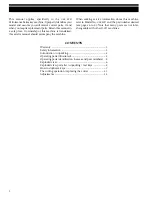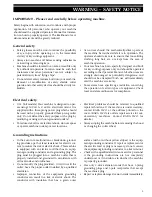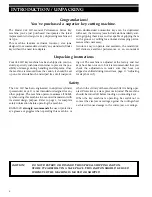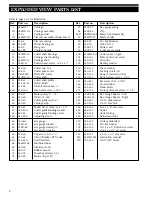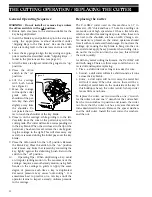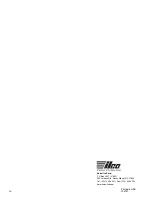
HOW TO DUPLICATE KEYS
11
Aligning keys in the vise jaws
Keys without shoulders
On keys such as the Ford double-sided key, which do
not have a conventional shoulder, the tip of the key is
used as the aligning point (see Fig. 4). Clamp the blank
key in first and move the machine carriage to the left.
Lower the key gauge and position the carriage so the tip
of the Ford key touches the key gauge. Install and align
the pattern key in the left vise jaw in the same manner.
“Best” and “Falcon” type keys do not have a conven-
tional shoulder but have a recessed tip and the key
gauge is used to align the recessed tips. After clamping
the blank key, the carriage is moved to the left so that the
key gauge can be lowered to contact the recessed tip sur-
face. The pattern key is aligned in the left vise jaw and
positioned to contact the edge of the key gauge in the
same manner.
Aligning keys in the vise jaws
Keys with shoulders
WARNING: Do not install or remove keys unless
the off/on switch is in the off position.
Both the pattern key and the key blank must be properly
aligned and securely clamped in the vise jaws. To do this,
slide the machine‘s carriage assembly towards the right and
position the appropriate key blank in the carriage’s RIGHT
vise jaw with the head of the blank pointing to the left.
Ensure that the shoulder of the key blank is located
approximately
1
⁄
8
” to the left of the vise jaw‘s left edge.
Holding the key blank firmly and level against the jaw,
tighten the wing nut. Position the pattern key in the car-
riage‘s LEFT vise jaw in a similar manner only this time
allowing a
1
⁄
4
” gap between the shoulder of the key and
the edge of the vise jaw.
Next lower the key gauge and position the carriage so
that the left edge of the gauge’s RIGHT prong contacts
the edge of the key blank’s shoulder (see Figure 3).
Loosen the wing nut securing the pattern key and repo-
sition the key so that its shoulder is in contact with the
left edge of the LEFT prong of the key gauge.
Check to ensure that the pattern key and blank
key‘s shoulders are snug against the key gauge and
both keys are positioned level (not tilted) in the
vise jaws. Retighten the wing nut.
Figure 3
Aligning shoulders of keys with key gauge
Figure 4
Use of gauge with various key types
Shoulder
Tip
Recessed tip


